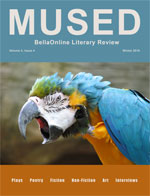Ann Waller
in her own words
My interest in photography began when, at age 10, I received a Kodak Brownie Hawkeye camera for Christmas. It was the time of the “Open Me First” marketing campaign, and I was duly excited with this very important present. It was not to be used as a toy, my parents admonished; it was for far more serious tasks. And, for the next five years, I was charged with recording formally posed family gatherings around the kitchen table, my parents standing erect in front of the Philco table-top TV, my mother in her spring coat and flowered hat on the front porch, our neighbors with their new blue Buick – matters that needed recording for posterity. These photos, after they were picked up at the corner drug store, were reviewed and studied, and fitted into little black square corners pasted in an album. My father would complain if feet were cut off; photos had to have the full length of the person, including their shoes, to be considered worthy of inclusion in the album. He would shake his head in dismay at the people cut off at the ankles, as if they had indeed suffered such a fate.
When I got to high school, I was thrilled that they offered a photography course as an elective – in rotation with woodworking, metalworking, and mechanical drawing. There were three girls in the class. I guess they didn’t think women would be interested in photography. Here, along with developing film, we learned how to work with the enlarger to crop photos. It was a new realm of creativity. In the dark room, we zoomed in close, cut out superfluous details – even feet – and organized our scenes to be more than mere snapshots. It was at this stage that I graduated to a Rolleicord, with adjustable shutter speeds, lens openings – quite a difference from the point-and-shoot Kodak. This opened up lots of options for creativity. Although it was the cheaper version of the venerable Rolleiflex, at about $120 it was a much bigger investment for my immigrant parents than the $11 Brownie. But for whatever reason, they indulged me.
Since my avocation was journalism, photography was always a natural partner. Writing articles and taking photos for the school newspaper continued into college and then I progressed to a job at a local newspaper. Through all the years, and hundreds of rolls of film, my main purpose with photography was still to record an event, illustrate a story. Somewhere along the line, I got jaundiced. There came a spell when, when we went on vacation, I wouldn’t bring a camera. I just wanted to enjoy my time rather than lug a camera to record every scene. I had my memories. How often did you go back and look at those albums anyway?
Then, I don’t know what happened. You’d think purists would lament the digital age, but for me, it became liberating. Cameras got smaller, and suddenly, you could take hundreds of pictures without worrying about cumbersome rolls of film and waiting for them to get developed, and dealing with the dozens of photos later. I started taking pictures again. In addition to taking snap shots of vacation scenes, I found I was looking abstractly – angles of tiled roof tops, a cluster of poppies in a retaining wall, a display of tomatoes. It became more than recording an event. While landscapes that set a general theme were still important, the photos had to convey the essence of the experience: was it the color of the buildings, the gargoyle on the roof, the framed doorway, the way people congregated, how a street vendor looked? What made it different? What caught my eye as exotic or unusual? What was artistically pleasing? What was memorable? What made me say – wow, that’s interesting? It meant focusing in on what was important, different, fascinating. This took it out of the realm of snapshot.
Photography is just one means of communicating, of sharing an experience. It can be factual: this is what we wore on Halloween 1992, or here’s us at the Roman forum. Or it can be more personal: how do I feel about what I am seeing, why does this strike me as interesting, isn’t it cool how those angles come together? Generally, while your friends may not want to view 120 snapshots of your vacation (it's easier to just bring home postcards), they would be interested in photos that convey a sense of time and place and feeling.

